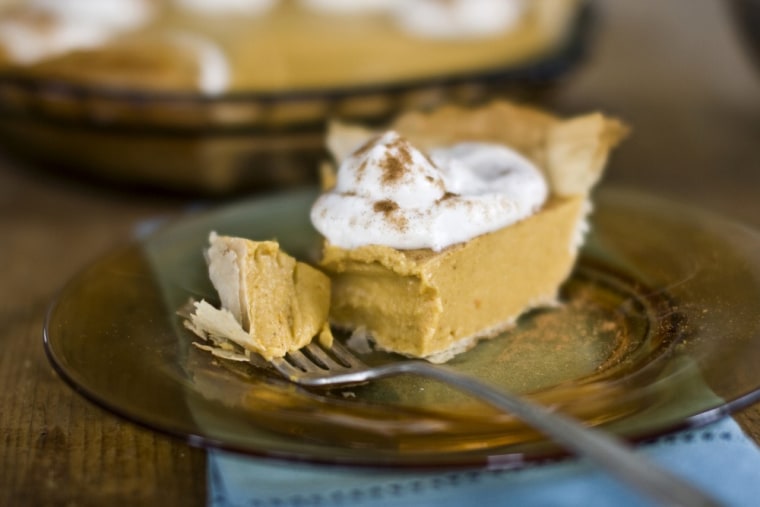
Sure, you know all the lyrics, but have you ever stopped to think about the food mentioned in holiday songs? Here are eight of the most mouthwatering edibles from the songs of the season.
Figgy Pudding from “We Wish You a Merry Christmas”
Lyric: “Now bring us some figgy pudding, Now bring us some figgy pudding...”
In Victorian England, Christmas carolers were traditionally invited inside the home for some Christmas pudding, a cake-like dessert full of spices. Figgy pudding is a variation made out of (you guessed it) figs and suet (the raw mutton fat found around the loins and kidneys). If that doesn’t sound too appetizing, modern recipes often skip the suet in favor of molasses and butter, but either recipe works, depending on how warmly you feel about carolers.
A Wassail from “Here We Come A-wassailing”
Lyric: “Our wassail cup is made/Of the rosemary tree/And so is your beer/Of the best barley”
Wassailing is the English Yuletide tradition of going door to door and wishing people good health over a hot cup of wassail. In medieval times, this winter drink was made with mulled beer or mead mixed with sugar and ginger in a bowl, then covered with toast or sops (soaked bread). Imagine ordering that at Starbucks. Modern versions of wassail are easier on the gullet; they often consist of a cider or wine base with added brandy or sherry and spices.
Roasted chestnuts from “The Christmas Song”
Lyric: “Chestnuts roasting on an open fire...”
Chestnuts peak right around Christmas time, and their historical affordability have made them a delicious and accessible winter treat for generations. City dwellers will be familiar with the sight and smell of chestnut vendors during the holiday season, but this snack is easy to make at home. Chestnuts are roasted (on an open fire, or, in a pinch, in the oven) by taking the unpeeled nuts and placing them in a single layer over the heat-source. After about 25 minutes of roasting, the shell will easily peel away, leaving a tender fruit with a delicate, slightly sweet flavor.
Latkes from “Oh Hanukkah”
Lyric: “Gather ‘round the table, we’ll give you a treat/Sevivon to play with, latkes to eat”
Hanukkah is the eight-day festival that celebrates the miracle that occurred when a one-day supply of oil was able to keep an ancient menorah burning for eight nights. The oil used to cook latkes, a traditional potato pancake, is symbolic of this event. Potato latkes are still extremely popular around the world, and the recipe remains greatly unchanged: peeled or cubed potato, salt, onion and flour, fried into a patty and served with applesauce.
Popcorn from “Let It Snow! Let It Snow! Let It Snow!”
Lyric: “And I’ve brought some corn for popping...”
The 1945 hit “Let It Snow! Let It Snow! Let It Snow!” suggests popping corn as a cozy activity for those snowed in, but nowadays the snack is usually purchased in the form of ubiquitous holiday popcorn tins. Popcorn also has the honor of being one of the few yuletide food items that doubles as tree trimming; many families make popcorn garlands for their outdoor trees.
Collard greens from “Christmas in Hollis”
Lyric: “It’s Christmas time in Hollis, Queens/Mom’s cooking chicken and collard greens...”
Collard greens, traditionally cooked alongside meats, are a staple of soul food, a cuisine associated with big family meals. Hip-hop group Run-D.M.C. canonized the greens as a part of a traditional American Christmas meal in the 1987 hit “Christmas in Hollis,” referring to the group's neighborhood in the New York borough of Queens. Traditionally, collards are also eaten on New Year’s Day to ensure a prosperous new year, as the leafy greens resemble money.
Eggnog from “Grandma Got Run Over By a Reindeer”
Lyric: “She’d been drinkin’ too much eggnog/And we begged her not to go...”
Grandma definitely won’t be the last person to imbibe too much of this rich drink over Christmas. This holiday libation has been popular in the United States since colonial times, when the availability of Caribbean rum and dairy products made it an affordable alternative to wine. The concoction of alcohol, raw eggs and sugar was originally served warm, though nowadays the non-alcoholic supermarket variety is served chilled and without the raw eggs.
Pumpkin pie from “Rockin’ Around The Christmas Tree,” “There’s No Place Like Home For The Holidays,” and “Sleigh Ride”
Lyric: “Later we’ll have some pumpkin pie/And we’ll do some caroling...”
Lyric: “And he was headin’ for Pennsylvania/And some homemade pumpkin pie...”
Lyric: “There’s a happy feeling nothing in the world can buy/When they pass around the coffee and the pumpkin pie...”
Pumpkin pie may be frequently associated with Thanksgiving, but it’s the only Christmas food to appear in not one, but three well-known Christmas songs. The dessert is usually made from canned pumpkin and spices such as cinnamon and nutmeg. Pumpkin pie is traditionally eaten through early winter, and is perhaps the dish that is most associated with a traditional American Christmas.
More from Bites: